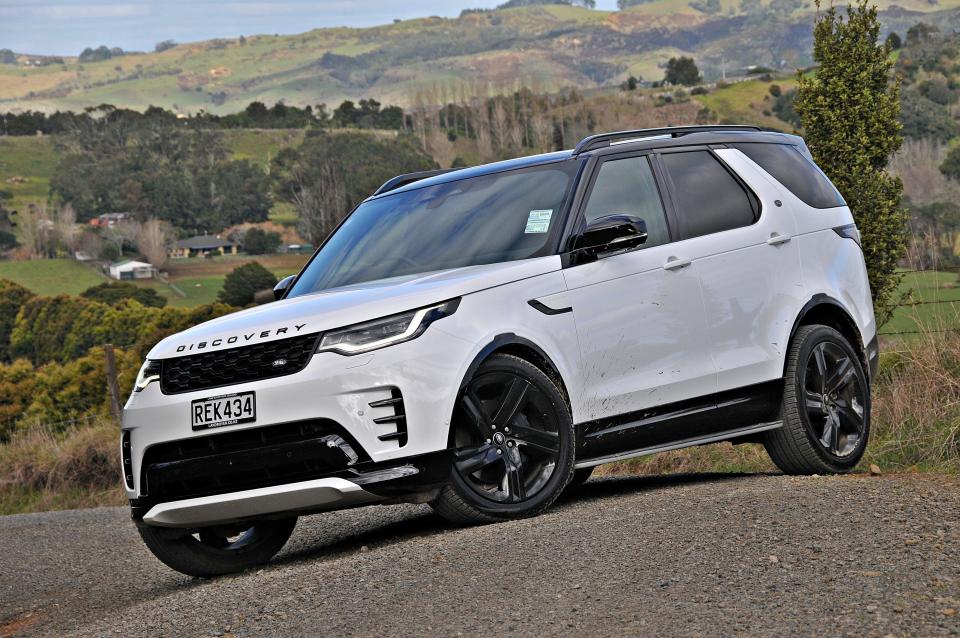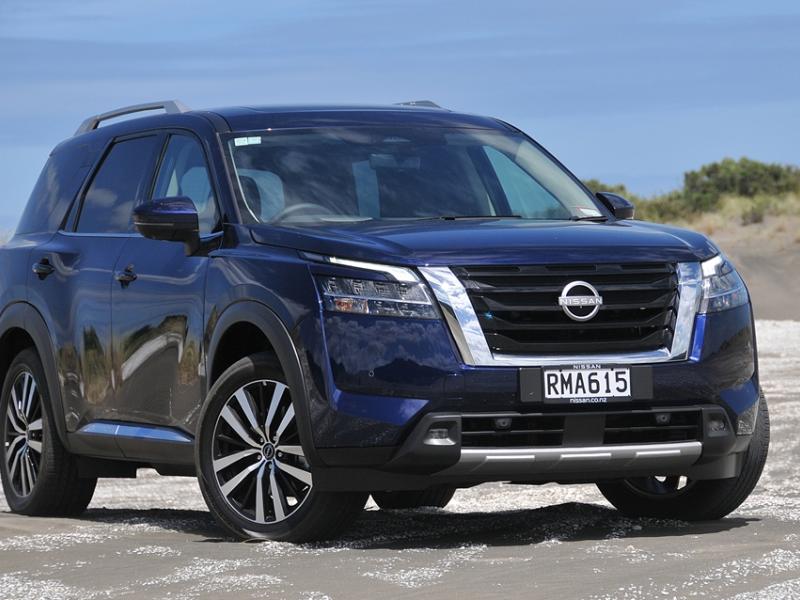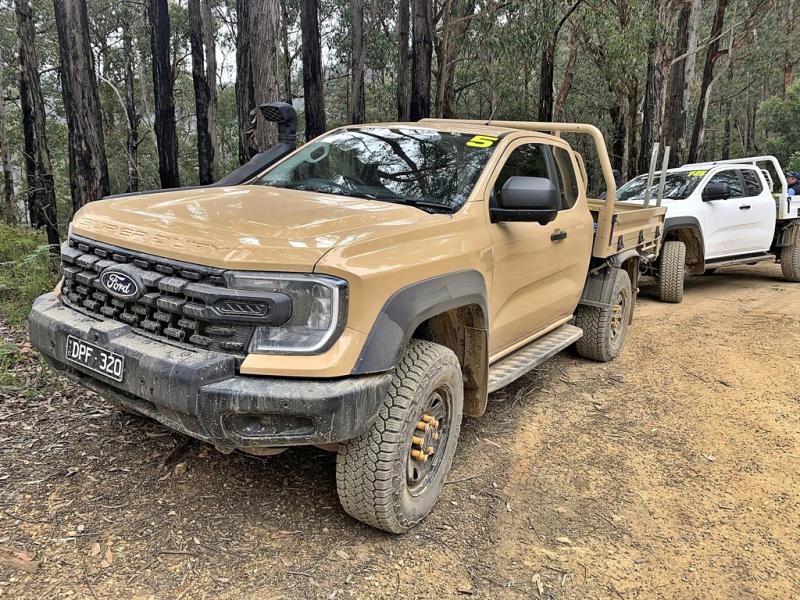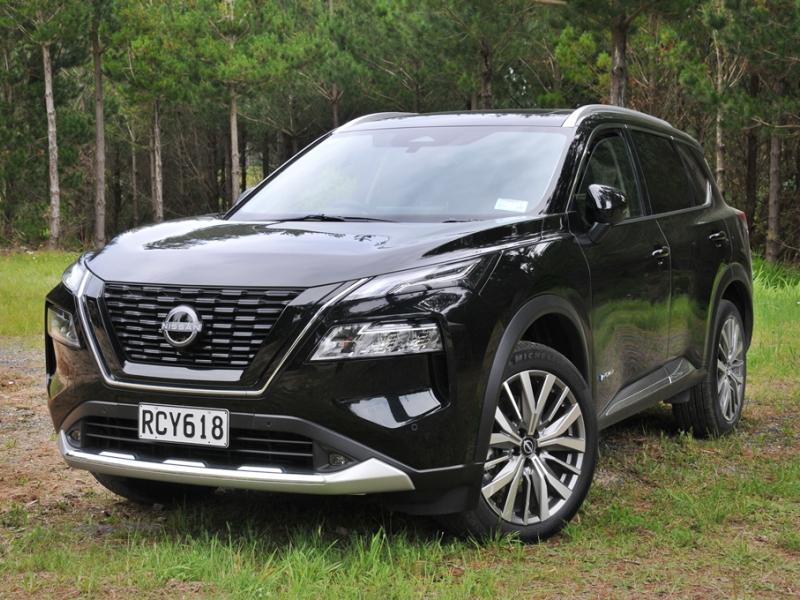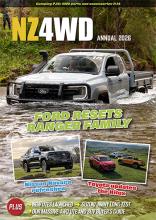Chewing though mid-day Auckland traffic, it’s hard not to feel just a wee bit superior. We’re aboard Jaguar Land Rover’s Discovery D350 in the most-popular HSE spec, and it is sublime.
It's desirable, practical, and cheaper than many direct rivals. This SUV has an enormous spec sheet in standard HSE guise, and a few options to add to the experience. With apologies to Audi and Mercedes, it’s quite possible this full-size Discovery really has no direct competitor.
Our 2025 Land Rover Discovery D350 Dynamic HSE is sublime. A full-size 4WD four/five-door seven-seater wagon. Seven years into its life cycle, the current Discovery has received an updated engine, a 3.0-litre six-cylinder mild hybrid turbo diesel. It’s a significant upgrade over the previous of the engine, adding 37kW and 50Nm to make a total of 257kW/700Nm driving through an eight-speed torque converter automatic transmission. There’s a 48-volt mild-hybrid system, which supports the engine unobtrusively and helps boost fuel economy and reduce exhaust emissions.
So. Looking closer at the 2025 Discovery and in particular the enormous mountain of torque that gives it superb on-ramp sprint times getting onto the motorway and also endows it with prodigious ability out in muddy country goat tracks.
The engine gets this huge SUV from 0-100km/h in just 6.3 seconds and go on to a top speed of around 210km/h.
The Discovery difference may never be discovered by most owners, yet it defines any JLR product. Though the fifth generation Discovery has moved a fair way into Range Rover’s luxury environment, it must still retain all the offroad capability that made the previous four generations so special. And with Discovery now sporting a massive tech, spec and comfort pedigree, that frees Range Rover to take new territory further up the ‘premium/luxury 4WD’ segment.
We’ve driven the older models: a Discovery 1 V8 that majored in body roll but was spookily good offroad; a Discovery II Tdi with Active Cornering Enhancement that banished excessive leaning in corners. Compared to the old Disco III (and the Disco IV, which was really just a DIII facelift), the fifth-gen car is very different. There is no longer a body-on-chassis to harm on-road dynamics.
The Discovery now sits on an all-aluminium platform – one it shares with the full-size Range Rover. Importantly, its all-aluminium architecture has increased interior space (as a result of a longer wheelbase) and all-round performance (thanks to weight loss of up to 480kg).
Once, the Discovery created its own market segment, a rough, tough offroader with comfy seats; these days it’s more about supreme all-road comfort and safety with a dose of big off-road capabilities to top it off. The chassis is well composed - there’s some body roll, but it’s all kept under control. Nowhere near the pitch and yaw of Disco I.
Electronic air suspension features alongside the vehicle's Adaptive Dynamics to automatically raise or lower the suspension to adjust to different driving conditions and load changes providing luxurious ride comfort in all conditions. The system is also self-levelling, maintaining an optimum ride height when towing or carrying heavy loads for improved comfort and composure. It also assists when hitching a trailer, or when loading or unloading from the boot, with controls inside the luggage compartment able to raise or lower the suspension by 50mm. There’s a great degree of adjustability, and the ride is a big improvement over the previous Disco III and IVs.
Going offroad? The approach angle suggests there’s going to be some gravel rash on the Discovery’s chin. That’s when we flick into the suspension mode screen and go to offroad mode, the air suspension adding needed ride height. Not only is there a higher ‘offroad’ ride height, but the driver can select a lower ‘access’ ride height to enable children or people with mobility difficulties to enter or exit.
The wading height is a sensational 900mm.
Some media call this an AWD SUV. On the basis of the drivetrain’s selectable low range, we disagree. It’s permanent 4WD with a locking rear diff.
There’s a button-actuated twin-speed transfer box with high and low ranges that can switch between the gears on the move, Land Rover’s multi-mode Terrain Response 2 system and that locking rear differential.
Land Rover claims the Discovery D350 Dynamic HSE uses 7.5L/100km of diesel though we found ourselves floating above 8.0l/100 km unless we really tried. That said, we did cruise significant lengths of motorway in top gear at 100km/h with the tacho showing 1,400rpm and the fuel meter sitting below 5.6l/100km.
The D350 has a black contrast roof with black roof rails and a panoramic glass sunroof with tinted glass and matrix LED headlights. The Dynamic HSE trim of our drive car is the most popular among customers and brings enormous 22in wheels, fancier ambient LED lighting inside, ventilated front seats and a punchier ‘surround’ sound system.
The optional cold climate pack adds heated front seats, a heated steering wheel and headlight washers, and the towing pack adds advanced tow assist, an electrically deployable tow bar and automatic headlight levelling.
Inside there are three rows of leather seats arranged in the ‘theatre seating’ format pioneered by Land Rover, aluminium accents, and a Meridian surround-sound audio system. The first and second seat rows are powered (even the headrests) and the third row deploys electrically. The rear door opens on the remote, with a cargo guard popping up as the door opens.
The second row of seats has a 60/40 split and each portion slides fore and aft as well as folding. In the third row, the Discovery is head and shoulders more spacious than its rivals, thanks to the modern version of the Disco’s roof kick and also to the theatre seating that puts row two and three occupants slightly higher than those in the front seats.
The four main doors are all in ‘clamshell’ style, the outer skin wrapping right down to the side steps. Important – why? Because if the driver does do a bit of rough road or off-road work, this design helps keep mud and muck off trousers.
The doors are also festooned with the speakers of the surround sound system – each front door has three speakers.
The 11.4in Pivi Pro curved touchscreen is very good, and more akin to an iPad than some contemporary ‘portrait’ format screens. It is well-configured and easy to use, and the navigation screen is exceptionally clear.
Setting up Apple CarPlay was seamless and the head-up display is crisp and clear, displaying both the speed limit and vehicle speed.
Underneath the touchscreen there are buttons and knobs for the air conditioning. The rotary dials increase or decrease the temperature and have rings around their edge that control functions like the heated seats.
These dials are repeated in the second row, meaning the air-con has four independent zones.
Storage cubbies are hidden in places you least expect to find them, such as behind the ventilation controls and under sliding cupholders; the fifth generation Discovery also retains the dual glove box that has always been a Disco feature. In the centre console there’s also a chiller box for keeping drinks and snacks fresh.
There are nine USB-C charging ports in the cabin, along with four 12-volt outlets. Under the dash’s rotary dials there’s a handy wireless phone charger.
The rotary dial for off-road driving mode selection sits nicely in the centre console behind the gear selector.
Like any modern 4WD, the electronic ADAS system’s assists to ‘safety’ can be annoying, but are necessary for any vehicle that wants a five-star safety rating. In the D350’s case the driver-assist warning systems are evident the instant the D350 reaches the road. Good news though: the D350 allows the driver to select reduced driver safety ‘gongs’. In fact, this quickly became reflexive when starting: seatbelt on, foot on brake, starter button depressed and three clicks on the ADAS selector button.
Towing’s class-leading, up to 3.5 tonnes can be lugged behind the Discovery. We didn’t get a chance to try that, but the vehicle gives a clear impression that it will cope just fine with that weight.
So, driven?
Reversing down the driveway, the door mirrors remind the driver of this vehicle’s size, but the reversing camera gives an excellent (reassuring) hi-res view.
Out into urban streets and it’s easy to thread past doubled-up parked cars (this is Papakura, they do what they want).
Down to the motorway onramp and the torque gets unleashed, speedily propelling the Discovery to the legal limit.
Then it’s a cruise south, a chance to register those low fuel use figures and the sheer calm and silence of the vehicle. On a road trip, this thing will easily post truly excellent economy figures – 40mpg in old terms. That’s outstanding for a big SUV that weighs 2,400kg.
Further south, we head out to Waiuku on rural tarmac, bumpy roads over old swamp and the odd buried tree stump. These are an informal test zone, one that separates the leaf sprung utes from the coil suspended ones. Frankly, neither can come close to the air-suspended Discovery. It’s plush and un-fussed by the bash and crash of the rough surfaces.
For all its size, this is still a pleasurable car to pilot down a country road and is far more relaxed than some rivals, which opt for firm set-ups in a bid for greater dynamism.
The steering is well weighted and has a crisp initial turn-in that leaves the driver in no doubt about the car's placement on the road.
Threading our way respectfully through a fairly large cycle event, we reach the turn-off into Waiuku Forest, and taste bitter ashes of disappointment. Hammered by recent storms, the access road has slumped into the Waikato River and the entrance gate is closed and locked. Our favourite forest is now closed to all but pedestrian users.
So, next option: rural roads through Aka aka and some wee farmy roads that are alternately dry and dusty or coated with greasy mud.
In the farm tracks, we didn’t even worry about bumping up the ride height. The all-round cameras give a clear view of the terrain and allow us to place the Discovery very accurately. From the tyres, there was never even a sense of slippage, torque moving seamlessly around as grip migrated front-rear and side to side.
Conclusion
The Discovery is a ‘best kept secret’ in the JLR family of 4WDs, and it really deserves a bit more profile.
Authoritative when it comes to ironing out road imperfections, glossing over vagaries in the asphalt and handling long-wave undulations with confidence, this SUV is a business-class cabin on wheels, with room for the whole family to go wherever takes their fancy – whether that be on the road or miles off it. There are few more useful large family SUVs.
At $145,000, the D350 is certainly selling to a subset of the market but is priced shoulder-to-shoulder with key rivals.
It might not be quite as offroad-capable as a Defender, but as they say: “if you know, you know”. Fuss-free in its nature and super-capable in every situation, this is one of the best SUVs on the market for its sheer usability.


